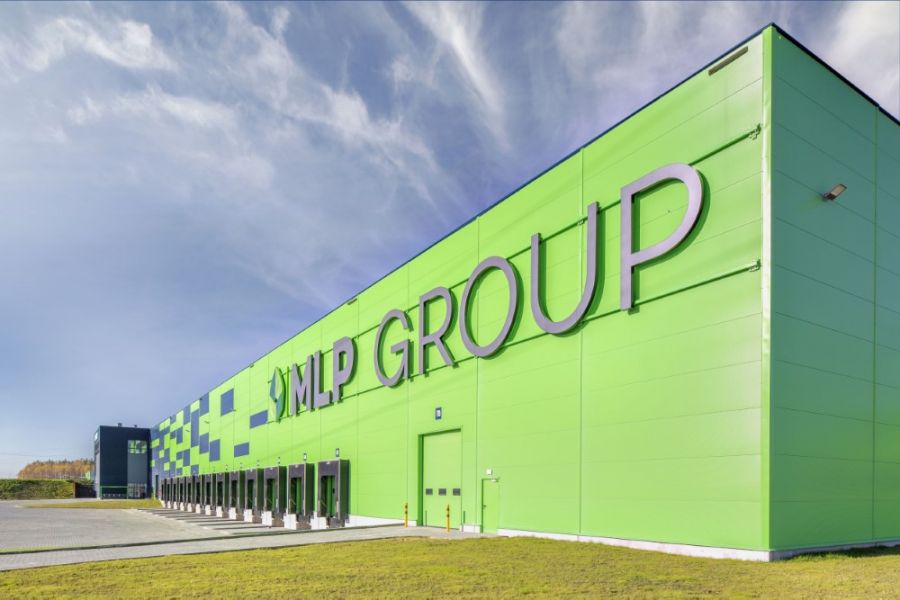No energy, no data

Poland’s largest commercial real estate consultancy, AXI IMMO, unveils the second edition of its ‘Data Centres in Poland’ report.
The Warsaw region is currently the largest data centre market in Poland. The capital is home to more than 50 server facilities and a key exchange point for internet traffic in the country. In 2023, Kowalski and his family generated an average of 236 GB of data via fixed Internet connections, while the share per SIM card oscillated at 132 GB of data per year. Most often, searching content is video, social networking, web browsing and gaming. How is the data centre market in Poland shaped, and what are its biggest challenges for the coming years? How crucial remains the further development and modernisation of the Polish energy sector? What direction is its transformation expected to take place, and how much GW of power could it bring?
The most frequently consumed data in Poland
The amount of data generated globally continues to grow exponentially. In 2023, mobile data volume reached 139 exabytes globally (+34% y/y). In Poland, the average household generated 236 GB of data via fixed internet connections, while on average, one SIM card in Poland generated 132 GB of data per year. Video consumption generated the most data, accounting for 67% of data over fixed internet connections and 60% of mobile data. The leading platforms are YouTube, Netflix, Amazon Prime and Disney+. This activity also records further significant increases due to the improvement in video content quality from HD to 4K. The second place is occupied by social media platforms (Facebook, LinkedIn, X), accounting for 9% of data over wi-fi and 25% of mobile data. In third place are games, generating 9% of data over wi-fi and 3% of mobile data despite being used by a smaller group of engaged gamers.
In addition to consumer-generated data, data produced by technology companies to support applications, cloud, and AI are also important, significantly influencing the demand of server space.
Janusz Gutowski, Managing Partner, AXI IMMO Services, explain:
AI (artificial intelligence) applications currently generate the most data. Although the end-user receives just a few lines of text in response to his or her enquiry on ChatGPT or several dozen film suggestions on Netflix, providing such information requires processing enormous amounts of data on a remote server. As we advance, we must realise that a full switch of the Google search engine to AI would mean a ten-fold increase in its energy demand, to a level consumed by a small-scale country such as Ireland.
Data Centres in Poland
The Polish data centre market comprises 150 projects, characterised by a high fragmentation – only a few facilities have an area of more than 10,000 sq m. The market is strongly concentrated around Warsaw, with 53 data centres with a total connected capacity of approximately 320 MW. This location is growing rapidly, mainly due to the presence of government and financial institutions and the headquarters of major companies. The city centre is also home to the country’s key internet traffic exchange point. Three major projects are underway in Warsaw: the Atman investment in Duchnice, the second phase of the Microsoft Azure data centre and the Vantage project. A total of 400 MW of dedicated data centre space is planned for the region, with the hyperscale facilities today accounting for around 60% of the region’s total capacity.
Best location for a data centre
A key factor in choosing a plot of land for a data centre is adequate electrical infrastructure and low energy costs. The energy supply must be stable, which requires access to two energy sources and a backup power system. The energy requirements of data centres have increased significantly in recent years, and the spike in global energy prices following the outbreak of war in Ukraine has made access to energy a key criterion. For colocation centres in the Warsaw region, connection requirements are 5-20 MW, for Edge facilities 2-5 MW and for hyperscale centres around 40-100 MW. Data centres for AI may need around 100 MW, and expectations are as high as 500 MW-1 GW. The result is a search for sites to build data centres in the Warsaw region and other locations that provide access to sufficiently high capacity.
Where are the most data centres outside the Warsaw area?
In other Polish cities, the data centre market is so far less developed, with the largest number of server facilities outside the capital in Katowice (16), Poznań (15) and Kraków (14). Further, smaller locations close to power plants have a chance to develop. On the Polish market, we identify seven types of facilities: hyperscale data centres, colocation centres, Edge data centres, telecommunications and IT companies’ own data centres, physical and virtual server hosting centres (VPN) and centres serving a single public organisation.
Power for Data Centres
Poland faces challenges regarding energy transition and ensuring sufficient electricity for the economy. In 2022, the share of RES in Poland’s energy consumption was 16.9%, below the EU average (23%). Poland plans to increase energy generation from offshore wind farms to 8-11 GW by 2040 and from the Choczew nuclear power plant, which is expected to generate 3.75 GW. For RES to be an alternative to commercial power generation, battery energy storage systems are needed. An example is the construction of a 133 MW energy storage facility by Columbus Energy in Trzebinia, which is due to be commissioned in 2026.
Janusz Gutowski adds,
Today, energy recovery solutions are also being considered when building a data centre facility. Given the EU guidelines for achieving climate targets, using heat generated by servers is becoming necessary. The heat provided by the data centre can heat and provide hot water to neighbouring residential buildings and public facilities by installing heat recovery chillers.
AXI IMMO
Graphics: Adobe Stock, sdecoret







